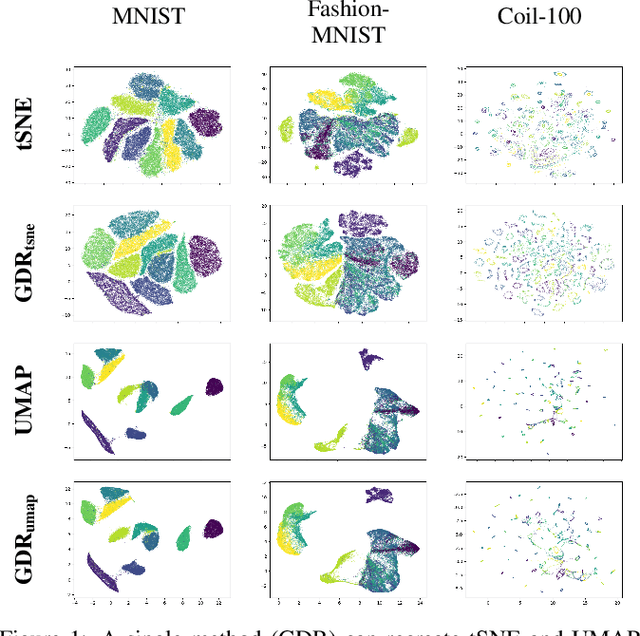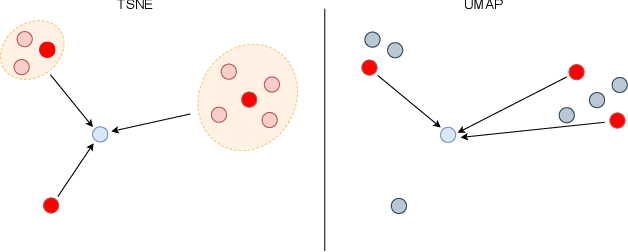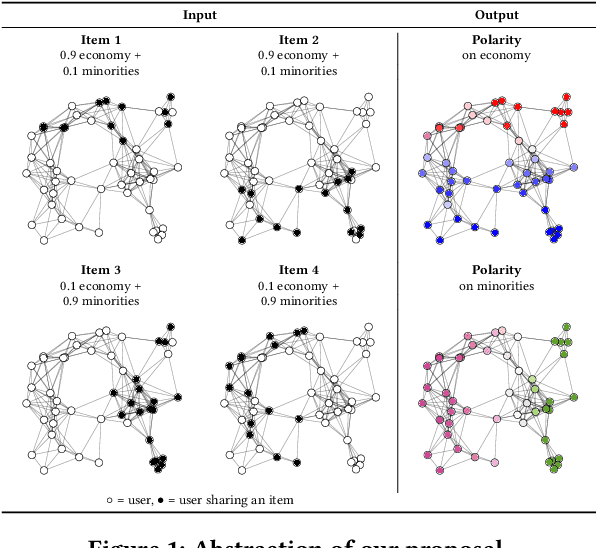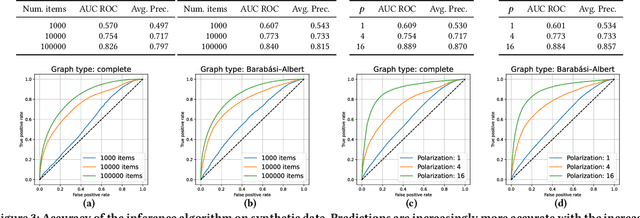Cigdem Aslay
ActUp: Analyzing and Consolidating tSNE and UMAP
May 12, 2023



Abstract:tSNE and UMAP are popular dimensionality reduction algorithms due to their speed and interpretable low-dimensional embeddings. Despite their popularity, however, little work has been done to study their full span of differences. We theoretically and experimentally evaluate the space of parameters in both tSNE and UMAP and observe that a single one -- the normalization -- is responsible for switching between them. This, in turn, implies that a majority of the algorithmic differences can be toggled without affecting the embeddings. We discuss the implications this has on several theoretic claims behind UMAP, as well as how to reconcile them with existing tSNE interpretations. Based on our analysis, we provide a method (\ourmethod) that combines previously incompatible techniques from tSNE and UMAP and can replicate the results of either algorithm. This allows our method to incorporate further improvements, such as an acceleration that obtains either method's outputs faster than UMAP. We release improved versions of tSNE, UMAP, and \ourmethod that are fully plug-and-play with the traditional libraries at https://github.com/Andrew-Draganov/GiDR-DUN
Learning Ideological Embeddings from Information Cascades
Sep 28, 2021



Abstract:Modeling information cascades in a social network through the lenses of the ideological leaning of its users can help understanding phenomena such as misinformation propagation and confirmation bias, and devising techniques for mitigating their toxic effects. In this paper we propose a stochastic model to learn the ideological leaning of each user in a multidimensional ideological space, by analyzing the way politically salient content propagates. In particular, our model assumes that information propagates from one user to another if both users are interested in the topic and ideologically aligned with each other. To infer the parameters of our model, we devise a gradient-based optimization procedure maximizing the likelihood of an observed set of information cascades. Our experiments on real-world political discussions on Twitter and Reddit confirm that our model is able to learn the political stance of the social media users in a multidimensional ideological space.
* Published in CIKM 2021
 Add to Chrome
Add to Chrome Add to Firefox
Add to Firefox Add to Edge
Add to Edge